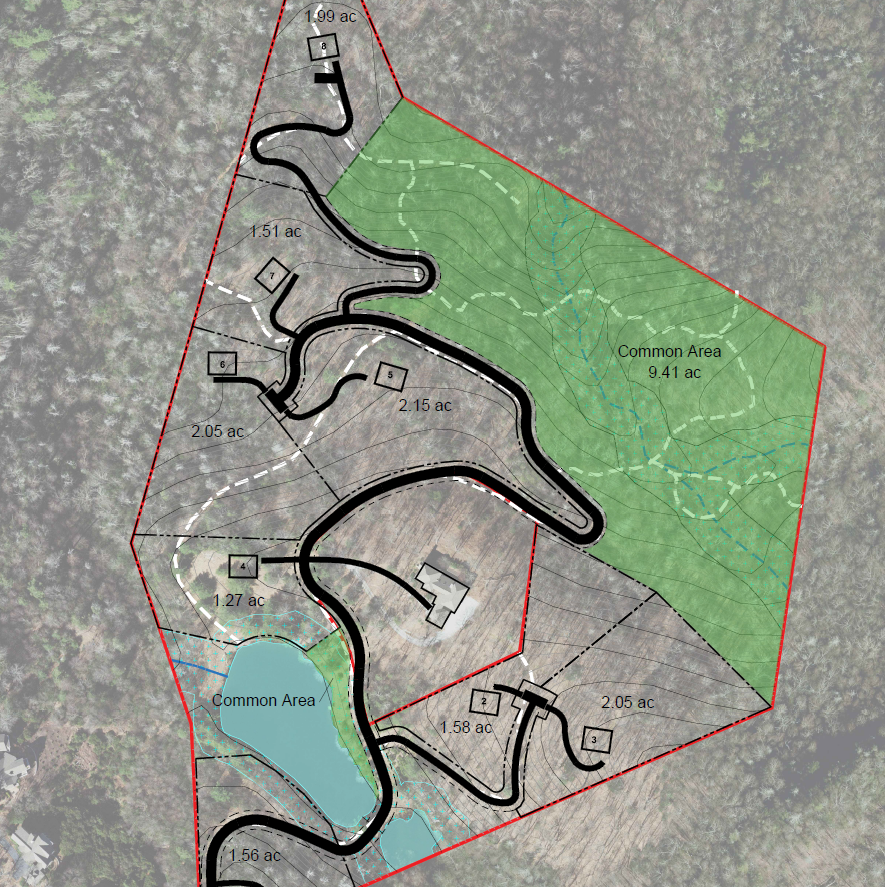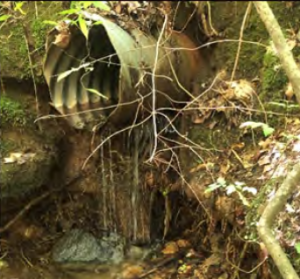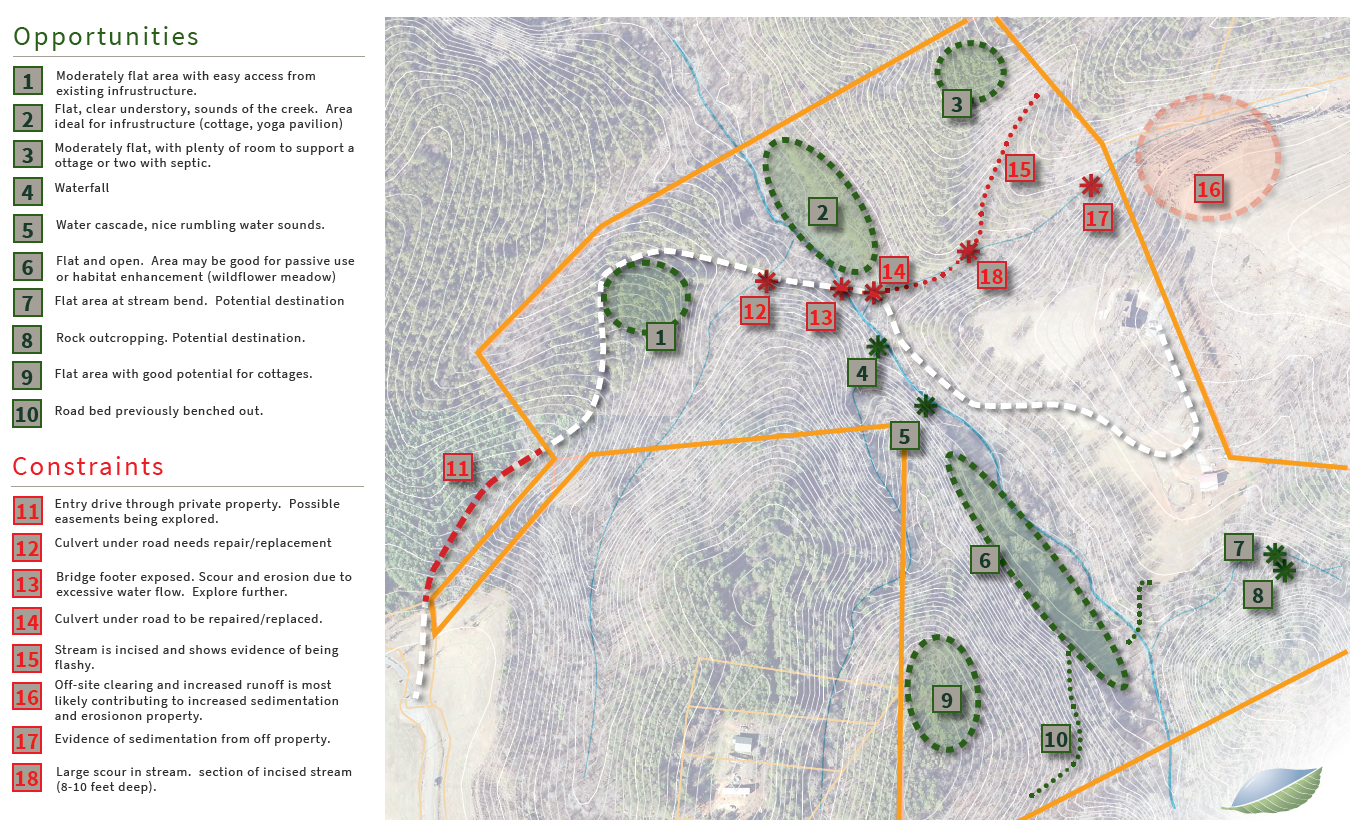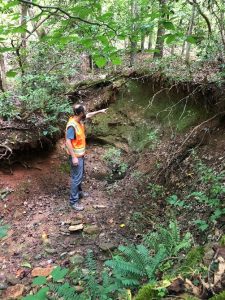THINGS TO INVESTIGATE BEFORE YOU BUY LAND
Buying a piece of property in the Blue Ridge Mountains is exciting with the anticipated mountain views, clear streams, and an escape from the hustle and bustle of the more urban life. There are many things to consider, though, prior to closing, to make sure you can develop the property in the way you envision. This blog will showcase some of the more important items to lookout for during the due diligence phase of your land purchase.
In summary, here are the top seven things all potential buyers should do before they purchase that special piece of land.
- Make sure to get a boundary survey that shows clear access to a road or shows an easement into the property if the property does not abut a public road. Many boundaries that are used in the sale of a property are from GIS records and this is not always accurate.
- Conduct an inspection of the property to make sure it can accommodate your needs and desired land uses and identifies all of the opportunities and constraints.
- Perform an ordinance and zoning review to understand what restrictions may be in place.
- Conduct a soil assessment to check soils for septic system suitability, if needed.
- Understand where your utilities, such as internet and power, will be coming from and whether or not they are available.
- Conduct a Phase 1 Environmental Site Assessment or other environmental review to make sure there are no known contamination issues on the property.
- Conduct a title search to make sure there are no claims or liens on the property.
Finding a real estate agent who specializes in land sales will help you navigate this process. For more information about what you need to know to conduct a proper due diligence process keep reading!

Are there buildable sites and can they be accessed?
All though this is not true for all land buyers, many times the number one goal of a land buyer is to build a house on the land they are buying. When siting a house there are several factors to assess:
- Topography
- Orientation with and fitting into the landscape
- Views, sound, solar orientation
- Site drainage, hydrology, and soils
- Access, infrastructure, and utilities
When onsite, Equinox weighs all these factors along with a thorough review of the local ordinance to record the site’s opportunities and constraints.
What are some of the most common site constraints?
Often times a site has less developable land than a client initially expects. Some of the most common constraints are required buffers and ordinance intricacies.
Buffers, Setbacks, and Easements
A piece of land may encounter any or all of the following space limitations:
- Streams, wetlands, and other hydrological features are required to be protected and require a buffer from them for any development.
- Many ordinances require vegetated buffers or screenings around developed areas.
- Many ordinances require lot setbacks and have lot size requirements based on zoning.
- Utility easements and restrictions of use are often over looked. Such utility easements that may run through a property are sewer, water, and powerlines.
Other Ordinance Requirements or Document Reviews
Steep slope requirements are very common in the mountains and kick in when the average slope meets a threshold. These requirements often demand more space, as erosion and other factors from development become a concern. Another ordinance requirement that impacts development relates to subdividing. If you are considering subdividing a parcel of land, carefully consider all of the ordinance requirements that might set into place. Also, it’s a good idea to make sure there are no restrictive covenants, bylaws or other restrictions previously placed on the property.
Is There a Place for Septic and Water?
Analyzing a potential buildable site for septic opportunities is a very important step in the due diligence term if a local sewer utility isn’t nearby. Given an unlimited amount of money, almost all locations could work, but the difference between a conventional septic system and a more engineered system can often price people out of a location. Having an assessment of your soils before you buy land is a very important step in the due diligence process. When it comes to water, if you don’t already have water lines coming to your future property, you will need drinking water. In rural areas this means having a well. While you can use water dowsing, this is not a scientific approach and we typically just work with a well driller when it’s time to drill a well which happens during the building process. In a region of adequate rainfall and favorable geology, it is difficult not to drill and find water at some point.
How does prior use of the land impact my vision?
It is rare to encounter a piece of land that has never been touched. Often land that is being purchased may have a previous homestead, been used for logging, farming, or other agricultural uses. In these cases where there may already be infrastructure on the land, it is a good idea to have these structures inspected and assessed. Some common issues found are:
- Stormwater failures and erosion concerns; and
- Potential site contamination
Stormwater Failures
Old construction techniques for stream crossings and road design may not have held up over time. Streams can migrate, culverts can fail, roads wash out, and overall drainage may need to be re-thought.

Potential Site Contamination
If your prospective property includes existing structures or has a history of commercial or agricultural use, it’s a good idea to understand any potential environmental risks in order to protect yourself from physical harm and/or financial liability. Simple investigations include:
- Transaction Screens
- Phase I Environmental Site Assessments (Standard and Rural)
- Phase II Environmental Site Assessments
Thorough site assessments conducted by qualified environmental professionals can ensure that a landowner will receive regulatory protections and financial assistance in the event of the discovery of contamination, even if that discovery happens years after the property is purchased.
Does the Land Have everything it Needs to Make my Vision Come True?
To summarize, a good land planner will put in the upfront desktop analysis, pull together the relevant team, and spend quality time on the land to explore all of the angles to make sure that the client’s vision can be achieved.
Navigating due diligence on the purchase of a piece of land can be tricky. So, when considering development and land or property purchase consider proper planning. Call us at 828-253-6856. We can assist you with proper due diligence planning from the beginning!


